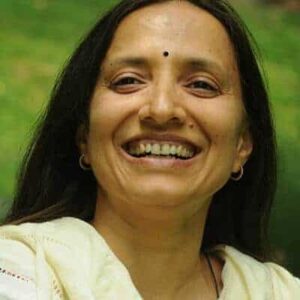What is a Chakra and a Nadi?
Imagine our body as having a circuit network. In the gross body, this circuit network is made up of arteries, veins, nerves, and the organs they are connected to. According to yogis of ancient times, besides the gross body, there exists a subtle—or energy—body which you can’t see or touch but where all life force energy or prana flows. The circuit network in the subtle body is made up of chakras and nadis through which life force energy, or prana or kundalini shakti flows.
The literal meaning of chakra is wheel or circular. These correspond to nerve centers or nerve plexus in the gross body and are nothing else but energy centers or energy reservoirs. It is believed that the human body actually has 109 chakras (energy centers), but among those, nine centers are important, and even among those nine, seven chakras are of primary importance. Each center is associated with a different element and emotions.
All these centers are connected with each other through nadis, or channels of metaphysical energy through which life-force (prana) flows. There are 172,000 nadis in our body, and there are various centers (chakras) for these 172,000 nadis. Out of these, there are three main nadis – Sushumna (runs through the spinal cord), Ida (runs through left nostril) and Pingala (runs through right nostril).
When energy (kundalini) or consciousness flows through these centers either in upward or downward directions, there are different emotions, feelings or sensations that one experiences.
When the energy moves through different chakras in the upward direction from the base of the spine to the top of the head it is called Urdhvagati (upward rise or progression). What is the pattern of emotions in Urdhvagati? You experience enthusiasm, then creativity blossoms, there is generosity and contentment, which in turn give rise to love. Love takes you to gratitude, which helps to bring awareness and wisdom (prajna) and ultimately leads you to bliss.
See this flow the other way around. When there is no joy in our life, then we come a step below and experience anger. From anger springs hatred and aversion. This further leads to a sense of fear. Fear as it grows gives rise to jealousy and envy, which in turn gives rise to lust, feverishness, and obsession. And lust and obsession bring us into the trap of inertia and negativity. This is the downward flow of the same consciousness or Kundalini energy. It is called Adhogati (retrogression or degeneration).
This upward or downward flow of energy keeps on happening very naturally and spontaneously in life all the time. But when we practice yoga and meditation in its authentic form, and maintain a healthy diet and lifestyle, we can maintain the upward rise of energy.






